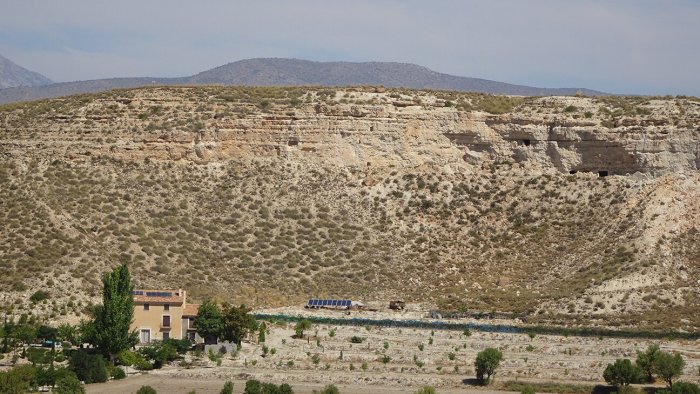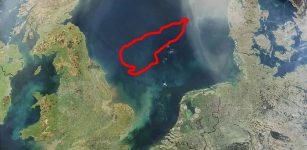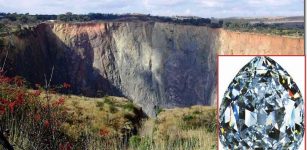Evidence Of Europe’s Earliest Human Presence, Dating Back 1. 3 Million Years Found At Venta Micena, Iberian Peninsula
Conny Waters - AncientPages.com - The question of when and how early hominids first arrived in Europe from Africa has been a significant topic of debate in human evolution. Recent geological dating techniques applied to the Orce sites in the Baza basin, Granada, have yielded compelling evidence that may shed light on this controversy.
The findings indicate that human remains discovered in this area are approximately 1.3 million years old, potentially making them the oldest in Europe. This data supports the hypothesis that humans entered Europe through the southern Iberian Peninsula, possibly via the Strait of Gibraltar, rather than following the Asian route to the Mediterranean.
The data of this study are very precise thanks to the long sedimentary sequence that outcrops in Orce, with 15 vertebrate deposits superimposed in different stratigraphic positions. Credit: Lluís Gibert.
The dating process employed paleomagnetism analysis on a previously unsampled area of the Orce region. This area has been protected from erosion, preserving valuable geological information. Paleomagnetism is a relative dating method that examines the inversion of Earth's magnetic poles caused by the planet's internal dynamics. While these magnetic changes do not occur at regular intervals, they are recorded in minerals, allowing researchers to establish periods based on different magnetic events.
The accuracy of these new findings is enhanced by the extensive sedimentary sequence exposed in Orce. This long sequence provides a comprehensive record of geological and magnetic events, allowing for more precise dating.
"The uniqueness of these sites is that they are stratified and within a very long sedimentary sequence, more than eighty meters long. Normally, the sites are found in caves or within very short stratigraphic sequences, which do not allow you to develop long paleomagnetic sequences in which you can find different magnetic reversals," says study leader Lluís Gibert, researcher and lecturer at the University of Barcelona's Faculty of Earth Sciences.
The researchers have successfully identified a magnetic polarity sequence comprising five magnetic events. This sequence enables them to situate the three Orce sites exhibiting human presence between the Olduvai and Jaramillo subchrons, specifically within 1.77 to 1.07 million years ago (Ma). Subsequently, the research team applied a statistical age model to refine the chronology of the various stratigraphic levels with a notably precise margin of error of 70,000 years.
Implementing this innovative methodology has yielded significant results. The findings indicate that Venta Micena, aged 1.32 Ma, would be the oldest site with human presence in Europe.
The study also analyzed faunal remains from Orce sites to support the dating.
"The results indicate that the small and large fauna of Orce is more primitive than, for example, that of the Sima del Elefante, where the evidence shows that the rodent Allophaiomys lavocati is more evolved than the Allophaiomys recovered from the Orce sites," Gibert explains.
Another relevant indicator of the age of the Orce sites is the absence of the pigs' ancestors. "These animals are considered to be Asian immigrants and have not been found in any European site between 1 and 1.5 Ma, while they have been found in the Sima del Elefante, supporting that the Orce fauna is older," explains the researcher.
This new dating would be added, according to the researcher, to other evidence that would tip the balance in favor of the colonization of Europe through the Strait of Gibraltar, rather than the alternative route: the return to the Mediterranean via Asia, such as "the existence of a lithic industry with similarities to that found in the north of the African continent and also the presence of remains of African fauna in the south of the peninsula, such as those of Hippopotamus, found in the sites of Orce, and those of Theropithecus oswaldi, an African primate similar to a baboon, found in the Victoria cave, a site near Cartagena (Murcia), non-existent anywhere else in Europe."
"We also defend the hypothesis—adds the researcher—that they arrived from Gibraltar because no older evidence has been found at any other site along the alternative route," says Gibert.
With these results, the researchers point to a "diachronism" between the oldest occupation of Asia, measuring 1.8 Ma, and the oldest occupation of Europe, which would be 1.3 Ma ago, so that African hominids would have arrived in southwestern Europe more than 0.5 Ma after leaving Africa for the first time about 2 Ma ago.
"These differences in human expansion can be explained by the fact that Europe is isolated from Asia and Africa by biogeographical barriers that are difficult to overcome, both to the east (Bosphorus Strait, Dardanelles, Sea of Marmara) and to the west (Strait of Gibraltar). Humanity arrived in Europe when it had the necessary technology to cross maritime barriers, as happened before a million years ago on the island of Flores (Indonesia)," says Gibert.
See also: More Archaeology News
In this sense, the researcher adds that the Gibraltar route currently requires crossing up to fourteen kilometers of sea route, but "perhaps in the past this distance was shorter at certain times due to the high tectonic activity in this region and the fluctuations in sea level that favored migrations."
The study was published in the journal Earth-Science Reviews
Written by Conny Waters - AncientPages.com Staff Writer






















